Healthcare Provider Update: Healthcare Provider for Lockheed Martin Lockheed Martin primarily partners with UnitedHealthcare to provide healthcare benefits to its employees. This collaboration allows Lockheed Martin to offer comprehensive health plans tailored to meet the diverse needs of its workforce across various locations. Healthcare Cost Increases in 2026 As healthcare costs are projected to rise significantly in 2026, Lockheed Martin employees may face increased out-of-pocket expenses. Following trends revealed in recent reports, health insurance premiums for many states are slated to soar, with some seeing hikes exceeding 60%. Contributing factors include rising medical costs due to inflation and the anticipated expiration of federal premium subsidies, which could push the average increase for consumers to over 75%. The combination of these elements suggests that both employees and employers may need to strategize for heightened healthcare expenses in the coming year. Click here to learn more

With 2021 wrapped up and going into the new year, the IRS just released Revenue Procedure 2021-45 and Notice 2021-61 which detail the tax changes and cost of living adjustments for 2022. The main points of this new release that will most likely affect Lockheed Martin employees would be:
- This year, the tax filing deadline is on April 18, instead of the typical April 15.
- The standard deduction for married couples filing jointly for tax year 2022 rises to $25,900 up $800 from the prior year.
- For single taxpayers and married individuals filing separately, the standard deduction rises to $12,950 for 2022, up $400, and for heads of households, the standard deduction will be $19,400 for tax year 2022, up $600.
Also, the personal exemption for tax year 2022 remains at 0, as it was for 2021. This elimination of the personal exemption was a provision in the Tax Cuts and Jobs Act.
If you experienced a job change, retirement or lapse in employment from Lockheed Martin, the “lookback” rule may be an important option to consider when filing taxes this year. You’ll also have the option to use your 2019 earned income for your 2021 return thanks to changes from the American Rescue Plan Act. This rule is mainly used for calculation of the Earned Income Tax Credit and the Child Tax Credit.
Remote workers employed by Lockheed Martin might face double taxation on state taxes. Due to the pandemic, many employees moved back home which could have been outside of the state where they were employed. Last year, some states had temporary relief provisions to avoid double taxation of income, but many of those provisions have expired. There are only six states that currently have a ‘special convenience of employer’ rule: Connecticut, Delaware, Nebraska, New Jersey, New York, and Pennsylvania. If you work remotely for Lockheed Martin, and if you don't currently reside in those states, consult with your tax advisor if there are other ways to mitigate the double taxation.
Retirement account contributions: Contributing to your Lockheed Martin 401k plan can cut your tax bill significantly, and the amount you can save has increased for 2022. In 2022, the IRS has raised the contribution limit for a 401k to $20,500 - up by $1,000. Meanwhile, Lockheed Martin workers who are older than 50 years old are eligible for an extra catch-up contribution of $6,500.
There are important changes for the Earned Income Tax Credit (EITC) that you, as a taxpayer employed by Lockheed Martin, should know:
- The income threshold has been increased for single filers with no children; the American Rescue Plan Act temporarily boosted it from $543 to $1,502 in 2021; this expansion has not been carried over to the 2022 tax year.
- Married taxpayers filing separately can qualify: You can claim the EITC as a married filing separately if you meet other qualifications. This wasn't available in previous years.
Increased deduction for cash charitable contributions: In years past, the threshold was $300 for both single and joint filers, but in 2022 that changed to $300 for single filers and up to $600 for joint filers.
Child Tax Credit changes:
- A $2,000 credit per dependent under age seventeen..
- Income thresholds of $400,000 for married couples and $200,000 for all other filers (single taxpayers and heads of households).
- A 70 percent, partial refundability affecting individuals whose tax bill falls below the credit amount.
2022 Tax Brackets
-png.png?width=575&name=image%20(18)-png.png)
Inflation reduces purchasing power over time as the same basket of goods will cost more as prices rise. In order to maintain the same standard of living throughout your retirement after leaving Lockheed Martin, you will have to factor rising costs into your plan. While the Federal reserve strives to achieve 2% inflation rate each year, in 2021 that rate shot up to 7% a drastic increase from 2020’s 1.4%. While prices as a whole have risen dramatically, there are specific areas to pay attention to if you are nearing or in retirement from Lockheed Martin, like healthcare. Many Lockheed Martin corporate retirees depend on Medicare as their main health care provider and in 2022 that healthcare out-of-pocket premium is set to increase by 14.5%. In addition to Medicare increases, the cost of over-the-counter medications is also projected to increase by at least 10%. The Employee Benefit Research Institute (ERBI) found in their 2022 report that couples with average drug expenses would need $296,000 in savings just to cover those expenses in retirement. It is crucial to take all of these factors into consideration when constructing your holistic plan for retirement from Lockheed Martin.
*Source: IRS.gov, Yahoo, Bankrate
Featured Video
Articles you may find interesting:
- Corporate Employees: 8 Factors When Choosing a Mutual Fund
- Use of Escrow Accounts: Divorce
- Medicare Open Enrollment for Corporate Employees: Cost Changes in 2024!
- Stages of Retirement for Corporate Employees
- 7 Things to Consider Before Leaving Your Company
- How Are Workers Impacted by Inflation & Rising Interest Rates?
- Lump-Sum vs Annuity and Rising Interest Rates
- Internal Revenue Code Section 409A (Governing Nonqualified Deferred Compensation Plans)
- Corporate Employees: Do NOT Believe These 6 Retirement Myths!
- 401K, Social Security, Pension – How to Maximize Your Options
- Have You Looked at Your 401(k) Plan Recently?
- 11 Questions You Should Ask Yourself When Planning for Retirement
- Worst Month of Layoffs In Over a Year!
- Corporate Employees: 8 Factors When Choosing a Mutual Fund
- Use of Escrow Accounts: Divorce
- Medicare Open Enrollment for Corporate Employees: Cost Changes in 2024!
- Stages of Retirement for Corporate Employees
- 7 Things to Consider Before Leaving Your Company
- How Are Workers Impacted by Inflation & Rising Interest Rates?
- Lump-Sum vs Annuity and Rising Interest Rates
- Internal Revenue Code Section 409A (Governing Nonqualified Deferred Compensation Plans)
- Corporate Employees: Do NOT Believe These 6 Retirement Myths!
- 401K, Social Security, Pension – How to Maximize Your Options
- Have You Looked at Your 401(k) Plan Recently?
- 11 Questions You Should Ask Yourself When Planning for Retirement
- Worst Month of Layoffs In Over a Year!
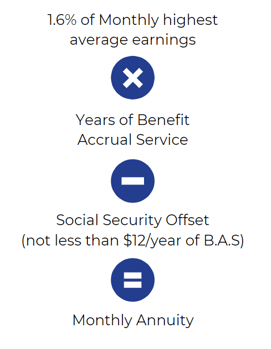
Highest Average Earnings is the monthly average of your regular earnings for the 36 consecutive months in which they’re the highest.
In most cases, this will be the sum of your last 36 months divided by 36.
The applicable interest rate is a separate average of each of the three segment rates for the fifth, fourth and third months preceding your annuity start date. The three segment rates are calculated by the IRS according to regulations that are also part of the Pension Protection Act of 2006 and reflect the yields of short-, mid-, and long-term corporate bonds. (Note: Chevron also has Legacy Unocal and Legacy Texaco Retirement Plans)
Different Plans
Similar to Chevron, AT&T has many different plans available. With AT&T, they have different pension plan formulas for management & non-management. Lets look at a sample non-management plan.
AT&T non-management employees have their own Craft/non-management pension plan. Let's take a look at a pension example for a gentleman by the name of Joe Smith who is hourly and using the Craft/non-management pension plan.
In 1990, Joe is hired by AT&T and participates in the Craft Pension Plan:
Craft Pension Plan
-
Craft has a defined benefit plan that uses pension bands.
-
A pension band determines your benefits based on your job title/grade level/occupation.
- Joe will receive a monthly dollar amount into his account for each year of service.
-
Joe's benefit (pension band may change yearly).
-
A pension band determines your benefits based on your job title/grade level/occupation.
Rising Interest Rates e-book
https://www.irs.gov/newsroom/irs-provides-tax-inflation-adjustments-for-tax-year-2022
https://news.yahoo.com/taxes-2022-important-changes-to-know-164333287.html
https://www.nerdwallet.com/article/taxes/federal-income-tax-brackets
https://www.the-sun.com/money/4490094/key-tax-changes-for-2022/
https://www.bankrate.com/taxes/child-tax-credit-2022-what-to-know/
How does Lockheed Martin determine the monthly pension benefit for employees nearing retirement, and what factors should employees consider when planning their retirement based on this calculation? Specifically, how do the concepts of "Final Average Pay" and "Credited Years of Service" interact in the pension calculation under Lockheed Martin’s retirement plan?
Lockheed Martin Pension Calculation: Lockheed Martin calculates monthly pension benefits using the "Final Average Pay" (FAP) and "Credited Years of Service" (CYS). The FAP is determined by averaging the three highest annual compensations prior to 2016, while CYS counts the years from employment start to December 31, 2019, when the pension was frozen. The benefit per year of service is calculated based on whether the FAP is less than or exceeds the Social Security Covered Compensation, with specific formulas applied for each scenario. These calculations directly affect the monthly pension benefit, which may also be reduced if retirement commences before a certain age due to early retirement penalties.
Given the recent changes in Lockheed Martin's pension policy, what implications could this have for employees who are planning to retire in the near future? How should these employees navigate their expectations regarding retirement income given that the pension has been frozen since 2020?
Implications of Pension Freeze: Since Lockheed Martin froze its pension plan in 2020, no future earnings or years of service will increase pension benefits. This freeze shifts the emphasis towards maximizing contributions to 401(k) plans, where Lockheed Martin increased its maximum contribution to 10% for non-represented employees. Employees planning for imminent retirement should recalibrate their financial planning to account for this change, prioritizing 401(k) growth and other retirement savings vehicles to compensate for the pension freeze.
What options does Lockheed Martin provide for employees regarding healthcare insurance as they approach retirement age? How do these options compare in terms of coverage and cost, particularly for those who will transition to Medicare upon reaching age 65?
Healthcare Options Near Retirement: As Lockheed Martin employees approach retirement, they can choose from several health insurance options. Before Medicare eligibility, they may use COBRA, a Lockheed Martin retiree plan, or the ACA's private marketplace. Post-65, they transition to Medicare, with the possibility of additional coverage through Medicare Advantage or Medigap plans. Lockheed Martin supports this transition with a Health Reimbursement Arrangement, providing an annual credit to help cover medical expenses.
Understanding the complex nature of Lockheed Martin's pension and retirement benefits, what resources are available to employees to help them navigate their choices regarding pension claiming options? In what ways can the insights from these resources aid employees in making informed decisions about their financial future?
Resources for Navigating Retirement Benefits: Lockheed Martin employees have access to resources like the LM Employee Service Center intranet, which includes robust tools such as a pension estimator. This tool allows for modeling different retirement scenarios and understanding the impacts of various pension claiming options. Additional support is provided through HR consultations and detailed plan descriptions to ensure employees make informed decisions about their retirement strategies.
For employees with varying years of service at Lockheed Martin, how can their employment history impact their pension benefits? What strategies should individuals explore to maximize their benefits given the different legacy systems that might influence their retirement payout?
Impact of Employment History on Pension Benefits: The length and nature of an employee’s service at Lockheed Martin significantly influence pension calculations. Historical changes in pension policies, particularly the transition points of the pension freeze, play critical roles in determining the final pension benefits. Employees must consider their entire career timeline, including any represented or non-represented periods, to understand and maximize their eligible pension benefits fully.
How does the Lockheed Martin retirement plan ensure that benefits are preserved for spouses or dependents after an employee's passing? How do different claiming options affect the long-term financial security of the employee's family post-retirement?
Benefit Preservation for Dependents: Lockheed Martin's pension plan includes options that consider the welfare of spouses or dependents after an employee's passing. Options like "Joint and Survivor" ensure ongoing benefits for surviving spouses, while choices like "Life with X-Year guarantee" provide continued payments for a defined period after the employee’s death. Understanding these options helps secure long-term financial stability for beneficiaries.
What steps can Lockheed Martin employees take to prepare financially for retirement, especially if they have outstanding loans or financial obligations? How crucial is it for employees to understand the conditions under which these loans must be settled before retirement?
Financial Preparation for Retirement: Employees approaching retirement should focus on clearing any outstanding loans and maximizing their contributions to tax-advantaged accounts like 401(k)s and Health Savings Accounts (HSAs). These steps are crucial for ensuring a smooth financial transition to retirement, minimizing potential tax impacts, and maximizing available retirement income streams.
With the evolution of Lockheed Martin's retirement initiatives, particularly the shift toward higher 401(k) contributions, how should employees balance contributions to their 401(k) with their overall retirement savings strategy? What factors should they consider in optimizing their investment choices post-retirement?
Balancing 401(k) Contributions: With the pension freeze, Lockheed Martin employees should increasingly rely on 401(k) plans, where the company has increased its contribution cap. Employees must balance these contributions with other savings strategies and consider their investment choices carefully to ensure a robust retirement fund that can support their post-retirement life.
How does Lockheed Martin's approach to retirement planning include the management of health savings accounts (HSAs) for retirees? What are the tax advantages of HSAs, and how can employees effectively utilize this resource when planning for healthcare expenses in retirement?
Management of HSAs for Retirees: Lockheed Martin encourages maximizing contributions to Health Savings Accounts (HSAs), which offer significant tax advantages. These accounts not only provide funds for current medical expenses but can also be used tax-free for healthcare costs in retirement, making them a critical component of retirement health expense planning.
What is the best way for employees to contact Lockheed Martin regarding specifics or questions about their retirement benefits? What channels of communication are available, and how can they access the most current and relevant information regarding their retirement planning? These questions aim to encourage thoughtful consideration and discussion about retirement planning within Lockheed Martin, addressing various aspects of the company's benefits while promoting engagement with internal resources.
Contacting Lockheed Martin for Retirement Benefit Queries: Employees should direct specific inquiries about their retirement benefits to Lockheed Martin's HR department or consult the benefits Summary Plan Descriptions available through company resources. These channels ensure employees receive accurate and comprehensive information tailored to their individual circumstances.
/General/General%207.png?width=1280&height=853&name=General%207.png)





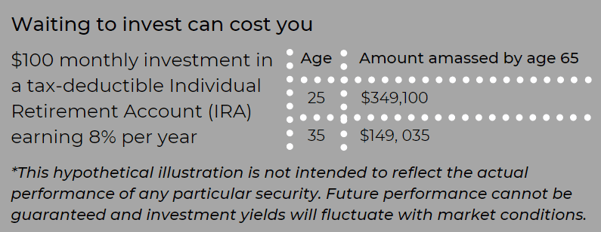

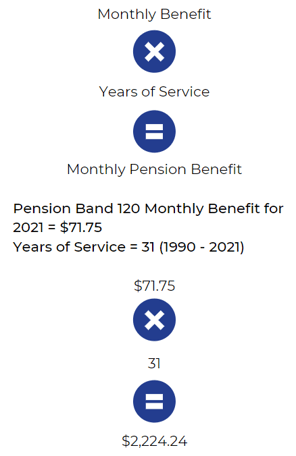

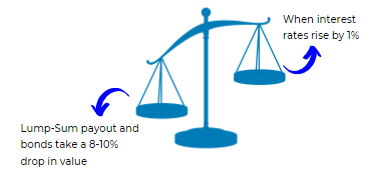



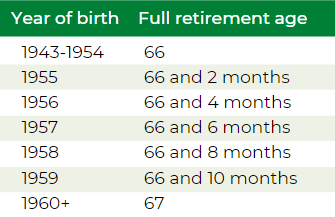

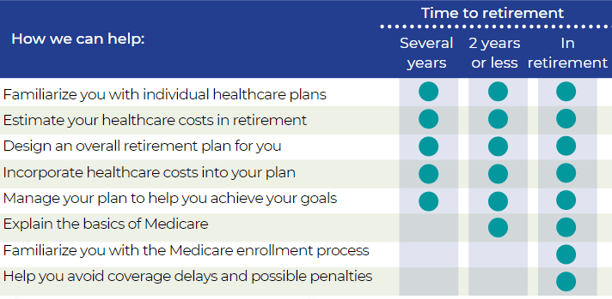







-2.png?width=300&height=200&name=office-builing-main-lobby%20(52)-2.png)









.webp?width=300&height=200&name=office-builing-main-lobby%20(27).webp)


-2.png)









.webp)